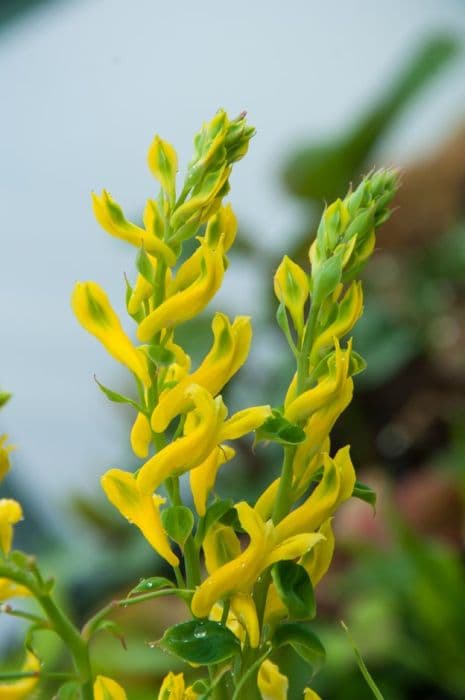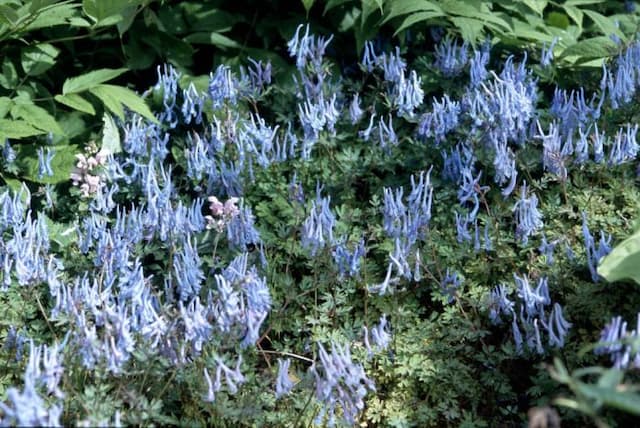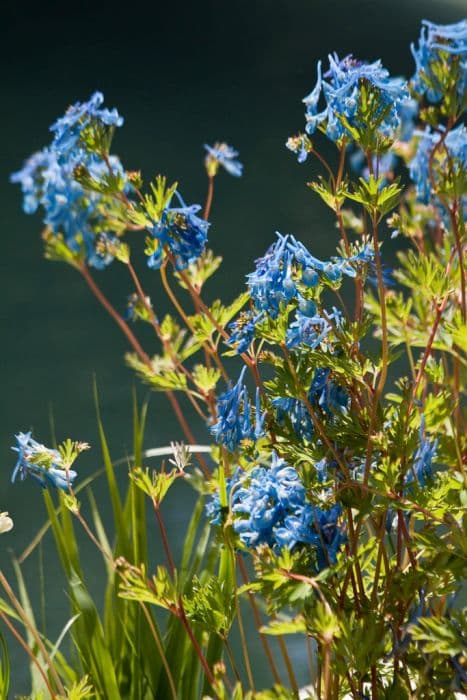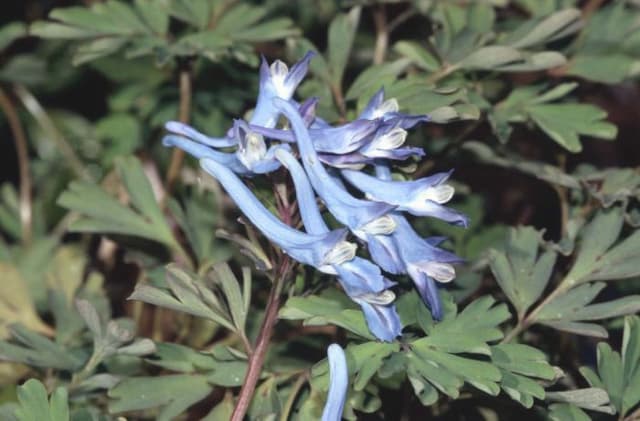California poppy 'Strawberry Fields' Eschscholzia californica 'Strawberry Fields'

ABOUT
'Strawberry Fields' is a compact annual to 25cm high with finely-divided, grey-green leaves and semi-double, papery flowers shaded reddish-pink to orange with paler yellow centres
About this plant
 Names
NamesFamily
Papaveraceae.
Synonyms
California Poppy, Golden Poppy, California Sunlight, Cup of Gold.
Common names
Eschscholzia californica.
 Characteristics
CharacteristicsLife cycle
Annuals
Foliage type
Deciduous
Color of leaves
Blue-green
Flower color
Red-orange
Height
1 feet 10-16 inches (30-40 cm)
Spread
1 feet 10-16 inches (30-40 cm)
Plant type
Herb
Hardiness zones
8
Native area
California
Benefits
 General Benefits
General Benefits- Low Maintenance: This plant requires minimal care once established, making it ideal for gardeners of all levels.
- Drought Tolerance: As a native of California, it is well adapted to dry conditions and can survive with limited water.
- Attracts Pollinators: The flowers are attractive to bees and other pollinating insects, which are beneficial for the garden and the environment.
- Easy to Grow: The California poppy can grow in a variety of soil types and is relatively easy to cultivate.
- Self-Seeding: The plant can self-seed under suitable conditions, creating new plants without additional effort from the gardener.
- Colorful Blooms: The 'Strawberry Fields' variety provides vibrant, strawberry-colored flowers that can brighten up any garden space.
- Adaptability: It can be grown in various settings, including flower beds, borders, rock gardens, and containers.
- Fast Growth: California poppies have a rapid growth rate, allowing for quick establishment and floral display.
- Seasonal Interest: They offer a burst of color in spring and summer, enhancing the seasonal appeal of a garden.
 Medical Properties
Medical Properties- Anxiety relief: Commonly known as California poppy, it has been used in the past to help alleviate anxiety.
- Sedation: Has been known to possess mild sedative properties, which might be useful in promoting relaxation and sleep.
- Pain relief: Some traditional uses suggest California poppy may have analgesic properties.
- Antispasmodic: May relieve muscle spasms and cramps according to traditional herbal practices.
 Air-purifying Qualities
Air-purifying QualitiesThis plant is not specifically known for air purifying qualities.
 Other Uses
Other UsesCalifornia poppy 'Strawberry Fields' seeds can be used in baking as a decorative topping on bread and pastries, imparting a subtle flavor and aesthetic appeal.
The vibrant petals of the California poppy are sometimes used in the creation of natural dyes for fabrics, yielding a range of warm hues.
Pressed or dried California poppy flowers are popular in the craft of making bookmarks, greeting cards, and scrapbooking, adding a touch of nature's beauty to paper goods.
In landscape design, California poppy can be used in xeriscaping, a method that reduces the need for irrigation by using drought-resistant plants.
Over time, leaves and stems of the California poppy can contribute organic matter to compost piles, helping to improve soil fertility in gardens.
In photography, the bright flowers of the California poppy make for an attractive and eye-catching subject for both professional and amateur photographers.
California poppy flowers can be used in potpourri mixes to add color and a mild scent, enhancing the overall aesthetic of a room.
The dried seed pods of the California poppy can be used in floral arrangements or as unique elements in the creation of botanical jewelry.
California poppy can be part of sensory gardens designed for educational purposes, where the texture and color of its flowers help stimulate the senses.
When planted in containers on balconies or rooftops, California poppy can provide urban dwellers with a touch of wildflower charm in a compact space.
Interesting Facts
 Feng Shui
Feng ShuiThe California Poppy is not used in Feng Shui practice.
 Zodiac Sign Compitability
Zodiac Sign CompitabilityThe California Poppy is not used in astrology practice.
 Plant Symbolism
Plant Symbolism- Remembrance: California Poppy, as a symbol of Remembrance Day in some countries, is often used to remember those who have lost their lives in war.
- Resilience and Adaptation: The plant’s ability to thrive in difficult conditions symbolizes resilience and the ability to adapt to various situations.
- Peace: Its soft and delicate appearance can evoke a sense of peace and tranquility.
- Beauty and Simplicity: Known for its simple yet striking beauty, the California Poppy symbolizes the appreciation of natural beauty and simplicity in life.
- Restful Sleep and Recovery: Because of its mild sedative properties, the California Poppy is associated with restful sleep and recovery.
 Water
WaterCalifornia poppy, including the 'Strawberry Fields' variety, prefers well-draining soil and should not be overwatered to prevent root rot. Typically, watering once a week with about one inch of water – roughly 0.6 gallons per square yard – is sufficient. However, this can vary depending on climate, with less frequent watering required in cool, damp conditions, and more frequent watering during hot, dry spells. Always check the top couple of inches of soil for dryness before watering. Overhead irrigation or a soaker hose can be used to water the plants, keeping the foliage dry and preventing mildew.
 Light
LightCalifornia poppy 'Strawberry Fields' thrives in full sun, needing at least 6 to 8 hours of direct sunlight daily. The best spot for this plant is in a sunny border or a south-facing area where it can receive ample sunlight. If grown in pots, they should also be placed in a location where they can bask in full sun for most of the day.
 Temperature
TemperatureCalifornia poppy 'Strawberry Fields' can handle a wide temperature range, but ideally prefers temperatures between 50 and 75 degrees Fahrenheit. It can survive minimum temperatures down into the 20s, but prolonged exposure to freezing conditions may be harmful. These poppies can tolerate heat well, often withstanding temperatures up to approximately 90 degrees Fahrenheit without significant stress.
 Pruning
PruningPruning California poppy 'Strawberry Fields' is mainly done to remove spent blooms and encourage further flowering. Deadhead the faded flowers regularly to maintain the plant's appearance and prolong the blooming season. Pruning can be done throughout the growing season as flowers fade. This variety does not usually require heavy pruning; simply tidying up by removing dead or wounded foliage is typically sufficient.
 Cleaning
CleaningNot needed
 Soil
SoilThe best soil mix for California Poppy 'Strawberry Fields' is well-draining, sandy or loamy soil with a pH between 6.0 and 7.5. This plant does well in soils that are not too rich in organic matter, which can encourage more foliage than flower production.
 Repotting
RepottingCalifornia Poppies 'Strawberry Fields' are not commonly repotted as they are annuals or short-lived perennials; they are typically sown directly into the garden where they are to flower.
 Humidity & Misting
Humidity & MistingCalifornia Poppy 'Strawberry Fields' is tolerant of a wide range of humidity levels and does well in dry environments. Avoid high humidity to prevent fungal diseases.
 Suitable locations
Suitable locationsIndoor
Use bright light, well-draining soil, and minimal water.
Outdoor
Full sun, well-drained soil, sow directly after frost.
Hardiness zone
6-10 USDA
 Life cycle
Life cycleCalifornia Poppy 'Strawberry Fields' begins its life cycle with seed germination, typically in early spring, when the soil warms up. As the seedlings emerge, they develop a basal rosette of blue-green fern-like leaves. The plant goes through a vegetative state as it matures, building up energy for flowering. Flowering occurs from spring to early fall, showcasing vibrant pinkish-red blooms that open in sunny weather and close at night and during cloudy conditions. After pollination, typically by insects, the flowers develop into elongated seed pods that eventually dry and release seeds. The plant completes its life cycle either as an annual or a short-lived perennial, depending on the climate, dying back after seed dispersal with new plants growing from the self-sown seeds the following season.
 Propogation
PropogationPropogation time
Spring to early summer
Propogation: The Eschscholzia californica 'Strawberry Fields', commonly known as the California poppy, is most commonly propagated by seed. The best time to sow the seeds is in the fall or early spring, directly into the ground where they are to grow. The seeds require light to germinate, so they should not be covered with soil but simply pressed into the earth and kept moist. As a prolific self-seeder, once established, the California poppy will often propagate naturally, creating a carpet of color in the appropriate conditions. Germination can occur in 10 to 15 days in temperatures between 60 and 70 degrees Fahrenheit (15.6 to 21.1 degrees Celsius), with seedlings thinning to about 6 to 12 inches (15 to 30 centimeters) apart to allow for full growth.









